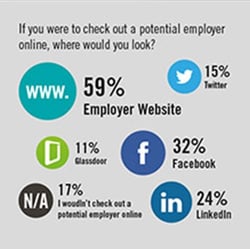Recruitment / When to say "yes" to the job
Joanne Lea
June 29, 2017
“Congratulations - We would like to offer you the job!” This is the news we all want to hear after a job interview but should you accept the position without further consideration?
Or do you wait and see if anymore job offers are placed on the table before you reach your final decision?
In recent years there has been changes in the way we approach looking for a job and the process we take in deciding to accept a job. This change has come about by how we “review” a company and the integral role social media plays in this.A recent Customer Age survey by BPS World and One Poll found that 79% of employees would check out an employer online before accepting a job offer. The results also found the ideal number of job offers to choose from was 3 but still 49% of people asked said they took the first job offered to them and only 5% of people considered 5 or more job offers.

But what makes you say “Yes” to the job? Even if you are going to accept the first job offer or the fifth job offer there are still some important areas to consider in your decision process and where you look for information to help you make that decision.
The survey showed the following areas are key for consideration before accepting a position:
Company Culture
What is the company like? Are you going to fit in? Do you share the values and beliefs on the organisation?
Viewing the company’s website, social media sites and review sites like Glassdoor.com will give you a real insight into the company and its people. It is worth taking the time to investigate to make sure your ideals and practices are aligned with the company. The majority of people will visit the company website but Facebook is the favourite social media site to review and LinkedIn and Twitter should also be visited to gain a wider perspective on the organisation.
Brand Association
Does this company offer a brand you believe in and trust? -Do you want to be associated with this organisation?
There is great value in a strong brand and employees are drawn to companies with a positive brand. Social media is a GOOD way to communicate a company’s brand so again it worth checking out all their social media sites.
Location
Where is the company based? How far will you have to travel? Will you rely on public transport to get you into work on time? What will be the cost transport?
Location of the company is one of the most important issues people take into consideration, the time and cost of commuting has a big impact on decision making. Getting up earlier, getting home later and dealing with traffic and transport problems can be a big deciding factor on accepting a job. According to the Customer Age survey, 24% of people cited this as a reason for accepting (or not accepting) a position over salary and long term potential. Although it may sound trivial in your consideration, it does in fact have a bigger significance and could make a huge difference to your lifestyle.
Progression
What are the opportunities for your to further your career?
If you are someone who wants to progress in a role, make sure you find out if what Learning and Development opportunities the company offers. It could prove pointless accepting your new role if that role will not further your personal and professional development. Some companies will offer in-house training or reimbursement of tuition fees, make sure you have a clear understanding of what is available to you.
Taking the time to work out if the role and the company are right for you can help you avoid accepting a role that is not suitable for you, sometimes declining an offer is more productive in the long term. However, if you have given the offer great consideration and it is the role for you then say “YES” and GOOD luck with your new job!
If you would like more details on how social media and review sites are impacting our decision making when it comes to acceopting a job, please download our Customer Age infographic


